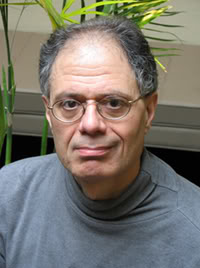Economics has been called the “dismal science,” because economists always seem to be admonishing the rest of us that, unfortunately, things have to be just as they are. Inequality and insecurity are a harsh but necessary medicine, they counsel, and well-intentioned efforts to interfere with the grim workings of economic law will only make matters worse.
The eminent economist Jagdish Bhagwati (sometimes called “the world’s leading free trader”) is not at all dismal. He is even rather jolly, and his heart is clearly in the right place. Nevertheless, his defense of free trade amounts to pretty much the same advice that economists have always offered the less favored: Swallow your medicine.
In one sense, globalization needs no defense; it is simply what’s happening. As a result of new transportation and information technologies, international commerce, travel, communication, and cultural exchange have expanded very rapidly in the last half century, virtually everywhere. Few people oppose this. Only a special kind of globalization is controversial: the creation of international agreements, regional or global, that provide businesses a uniform operating environment, or something pretty close. This means, in the first place, no “protectionism”: ie, prohibitive tariffs or quotas on imports. In practice, it also frequently means that no country can enforce labor, environmental, occupational-safety, or consumer-protection laws that are stronger than the weakest ones in any of the other countries that have signed the agreement. Further, governments may not subsidize domestic industries, whether to shield them from foreign competition or to keep prices low enough for poor citizens to afford.
The North American Free Trade Agreement (NAFTA), the rules of the World Trade Organization (WTO), and the loan conditions imposed by the International Monetary Fund (IMF) are leading examples of these globalizing mechanisms. For the last several years, the United States and other developed countries have been pushing for more comprehensive agreements: the Free Trade Area of the Americas (FTAA), which would extend NAFTA to the rest of the hemisphere, and the Multilateral Agreement on Investment (MAI), which would enlarge and codify the guidelines currently applied by the IMF and WTO. This alphabet soup of agreements, rules, and organizations is usually what defenders and opponents mean by “globalization.”
Opponents claim that globalization allows transnational corporations and financial institutions unfair advantages. With their superior resources, they can easily disrupt the economic life of towns or regions by threatening to close or move if their demands for tax concessions, wage reductions, anti-union legislation, or exemption from environmental regulation are not met. Yet less developed countries have little choice but to join these “free trade” regimes, since otherwise they may lose access to all international lending and investment, which they cannot do without.
In defense of globalization, Bhagwati replies that the best remedy for poverty, inequality, pollution, or lack of democracy is economic growth, and that the royal road to economic growth is integration into the global economy. Perhaps foreign companies pay lower wages than at home, but they generally pay better than local companies. Skills are transferred, as technicians and managers are trained and employed in the new factories. A tax base is created, and the revenues allow the government to pay for environmental cleanup, day care for working mothers, literacy programs, and other desirable social policies. This is the theory, at least, and there’s some evidence for it.
But there’s evidence on the other side as well. Bhagwati brushes aside claims that NAFTA has resulted in stagnant or lower wages for American workers and absolves NAFTA for job losses and worsening inequality. Other economists disagree. The Economic Policy Institute and the Center for Economic Policy Research (CEPR), among others, have found that NAFTA is directly implicated in all three social problems: job loss, stagnant wages, and increased inequality. There is no “expert” consensus on these matters. Readers in search of enlightenment should certainly read Bhagwati, Paul Krugman, and Thomas Friedman, but they should also read Robert Kuttner, Harvard economist Dani Rodrik, and the CEPR website.
Perhaps because his credentials are impeccable, Bhagwati feels free to make some large concessions to critics of globalization and consequently some very useful suggestions. Of course, he concedes, unregulated emigration can drain a poor country of its scientific and other talent. So why don’t the rich countries create technical training programs and facilities for poorer ones, or even supplement local salaries? Of course “a shift to internationally traded crops can put farmers at risk.” So well-financed adjustment assistance programs are necessary, with the money coming from the rich countries. In general, Bhagwati’s suggestions rest on two principles. One: start narrow, creating momentum and expectations, then go broad. Two: let globalization go forward, creating wealth, but use a portion of the gains to help the inevitable casualties. This is a sensible and humane approach – providing policymakers actually care about the casualties. Too often, they don’t.
Best of all, Bhagwati makes the all-important distinction between free trade and unrestricted financial flows. The latter have produced bankrupt governments and impoverished tens of millions of people in Mexico, Russia, Indonesia, Thailand, and Argentina in the last ten years, while providing huge profits for Wall Street. This is what is truly objectionable about globalization, and it is heartening that even one of its chief defenders agrees. But even “the world’s leading free trader” can’t fight Wall Street.
[END]
